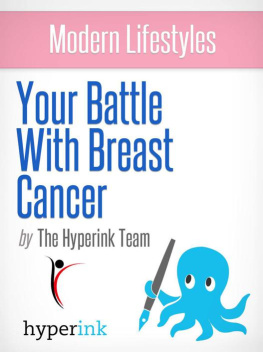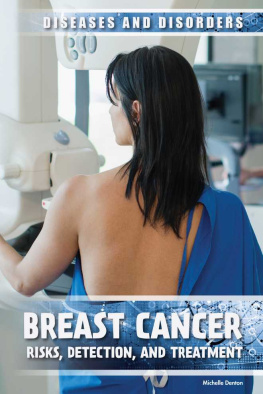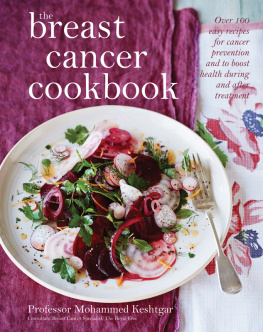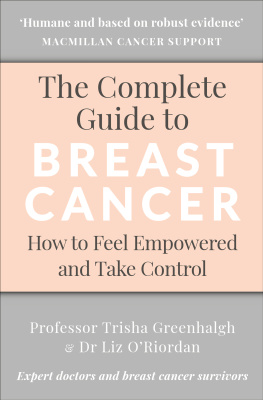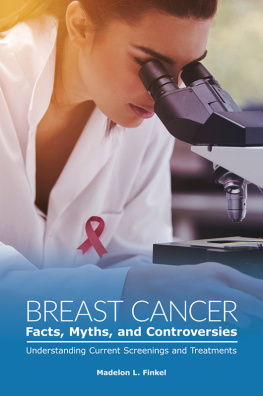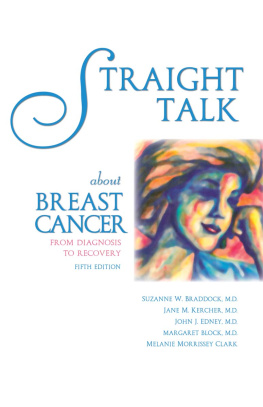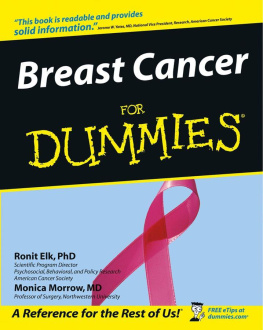Modern Lifestyles: Your Battle With Breast Cancer
Introduction
For those who have dealt with, or are dealing with, breast cancer, the ramifications of the disease are well known. For those who have not dealt with it, the fear is always there: What are my chances of getting breast cancer? What happens to me if there's a history of it in my family?
Chances are you know someone who has had breast cancer, or you may be a breast cancer survivor yourself. According to the National Cancer Institute , one out of every seven women born today will have a diagnosis of breast cancer at some point.
Even with the passing of time, the pain of losing a loved one to breast cancer never fades. My husband's mother died of breast cancer during the 1990s, and to this day he still lashes out against this disease that shortened her life. Grief, anger these are the emotions triggered by this disease.
Nevertheless, the majority of today's breast cancer stories are stories of survival. According to the American Cancer Society , 90 percent of women diagnosed with breast cancer have at least a five-year survival rate, with many women living years and years beyond this time frame. Today, we hear stories about women who conquered breast cancer decades ago and are still here, alive and healthy, to share their stories and inspire the rest of us.
Myths about Breast Cancer
As with any other disease, there are many common misconceptions about breast cancer. Unfortunately, these misconceptions can cause unnecessary fear and may even prevent a woman from getting proper screening and treatment.
Among the many myths that surface from time to time, here are a few of the more popular ones:
Breast cancer only happens in women. Breast cancer doesn't only occur in women; men can get breast cancer as well, although these cases are relatively rare, as you'll see in the statistics section that follows.
Breast cancer only occurs in people of a certain age. This, too, is a myth; breast cancer can develop in people of any age. Statistics do tell us, however, that approximately 40 percent of the new breast cancer cases each year are diagnosed in women over 65.
Breast cancer is fatal. Although breast cancer can certainly be fatal, 90 percent of breast cancer patients have at least a five-year survival rate. The good news is that researchers are continuously working to improve those numbers year by year.
You can feel a breast cancer tumor. According to the American Cancer Society, the first signs of breast cancer often show as an abnormality on a mammogram result. This mass or lump may not even be detectable yet by feeling or examining the area.
Using antiperspirants or antibiotics can cause breast cancer. According to the National Institute of Health and other medical sources, there is absolutely no truth to the idea that breast cancer is caused by factors such as taking antibiotics or using deodorants and antiperspirants. In fact, the antiperspirant tale became something of an urban myth a few years ago when the "story" broke in a widely circulated email. Although this email caused some alarm, the information is completely untrue; there is no clinical evidence to support the theory that antiperspirants, deodorants or antibiotics cause breast cancer or any other type of cancer.
You can cure breast cancer with homeopathic treatments. We all wish that we could cure ourselves of what ails us with those hyped-up vitamin concoctions or fruit drinks that are constantly advertised online and on TV. Likewise, it would be wonderful if we could simply rely on our grandmother's herbal preparations to take the place of modern medicine. According to the American Cancer Society, however, there is little if any clinical evidence proving that homeopathic remedies are at all effective in the treatment of cancer.
Statistics
The following statistics were compiled by the American Cancer Society's Facts and Figures data for 2011.
- Breast cancer makes up 30 percent of all new cancer cases in the US in 2011. Approximately 230,480 new cases were expected to occur in women during that year.
- Except for certain types of skin cancers, breast cancer is the most frequently diagnosed cancer in women.
- Approximately 39,520 breast cancer deaths were expected in women during 2011; in addition, approximately 450 breast cancer deaths among men were also expected.
- The five-year survival rate among women diagnosed with breast cancer is approximately 90 percent, as opposed to 63 percent back during the early 1960s.
- The five-year survival rate for women diagnosed with breast cancer that hasn't spread into the lymph nodes or outside the breast area is 98 percent.
- Here's a positive fact to consider: the American Cancer Society notes that, with new diagnostic technologies and treatments constantly coming on to the market, the five-year survival rate will undoubtedly continue to go up among newly and recently diagnosed breast cancer patients.
Symptoms
According to the Mayo Clinic website, symptoms of breast cancer in women may include the following:
- A lump in the breast, or a thickening in the skin that feels different from the rest of the area
- Any type of bleeding from the nipple
- Changes in the breast shape or size
- Skin changes in the breast, such as puckering or dimpling
- Flaking and scaling of the skin on the breast or nipple
- Pitting or redness in the skin on the breast, resembling the texture of an orange peel
If you have any of these symptoms, medical professionals strongly advise making an appointment with a doctor. If you've just had a normal mammogram and are having any of these symptoms, it's still crucial to see a doctor as changes may have taken place in your body since your last mammogram.
Risk Factors
According to the National Institute of Health, no one can perfectly pinpoint the exact causes or risk factors for breast cancer. Perhaps surprisingly, the majority of women who get breast cancer have no family history of the disease. To offset this data, however, we have another sobering statistic: approximately 20-30 percent of breast cancer patients do, in fact, have a family history of breast cancer.
The NIH also points out that a breast cancer patient who has cancer in one breast is at a higher risk for getting cancer in the other breast as well. Another risk factor concerns age : a woman of over 60 is at the greatest risk for developing breast cancer.
Early menstruation and late menopause pose a risk factor as well. Women who started their menstrual cycles before the age of 12 or who experienced menopause after the age of 55 also have a higher risk of developing breast cancer.
Other risk factors include:
- Never having children, or having all of them after the age of 30
- Taking certain estrogen or hormone replacement therapies for several years
- Obesity
- Extensive radiation therapy (as a young adult or child) to treat cancers in the chest
- Consuming more than a couple of alcoholic drinks a day
Why Early Detection?
Every time there's a story about breast cancer on television, we hear the same two words over and over again: early detection. Although reporters and doctors tell us that early detection can conquer this disease, they sometimes forget to tell us why.
The reason early detection is crucial is because breast cancer can spread to the surrounding tissues and lymph nodes, and the further it spreads, the more destructive it will be. That's why you shouldn't wait for symptoms to develop before you get an all-important mammogram. The American Cancer Society recommends that women over the age of 40 should have a mammogram done every year .

